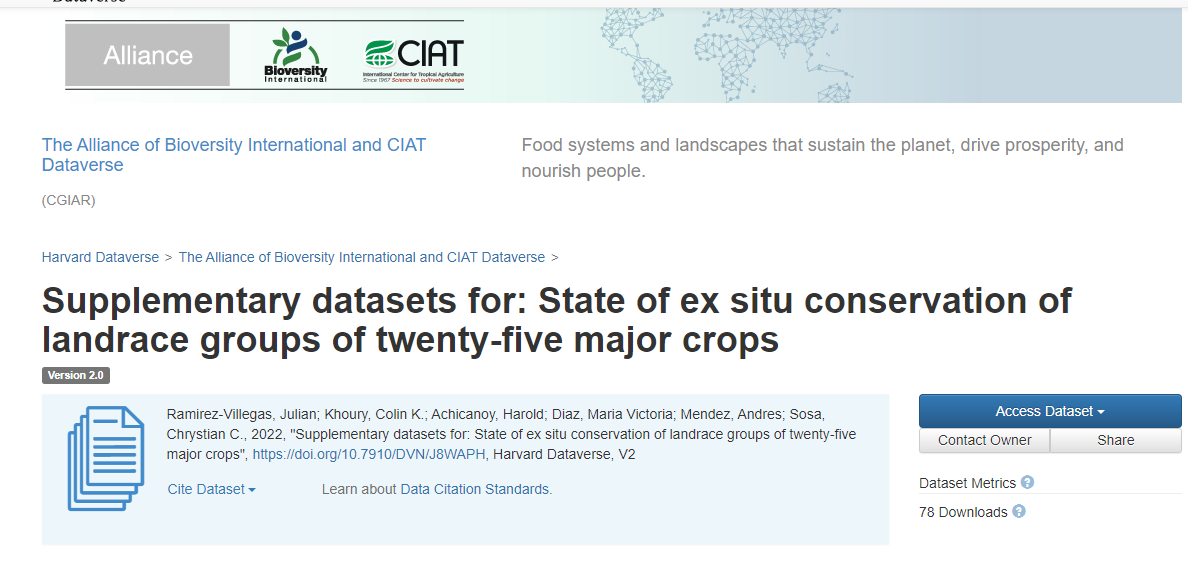Supplementary datasets for: State of ex situ conservation of landrace groups of twenty-five major crops
Here we modeled the potential distributions of eco-geographically distinguishable groups of landraces of 25 cereal, pulse, and starchy root/tuber/fruit crops within their geographic regions of diversity. We then analyzed the extent to which these landrace groups are represented in genebank collections, using geographic and ecological coverage metrics as a proxy for genetic diversity. Literature review and expert consultation were conducted to understand the various possible infraspecific genetic structures within assessed crops. Occurrence data from authoritative databases and published literature were compiled for these structures. This dataset was used to test the power of ecogeographic (spatial) information in distinguishing the various landrace groups within a crop (using the 50 ecogeographic spatial predictors, compiled in Ramirez-Villegas et al. 2020). Once the infraspecific structure with highest accuracy (ecogeographic signal) was identified, a total occurrence dataset for the landraces of each crop was compiled, with each occurrence attributed to a specific landrace group. These groups were then spatially modeled. Models were then subjected to the conservation gap analysis - essentially a comparison of these models to previous locations where germplasm for these landraces has been collected and is now conserved in genebanks. This gap analysis used three main approaches in determining conservation gaps- connectivity, accessibility, and environmental difference.

